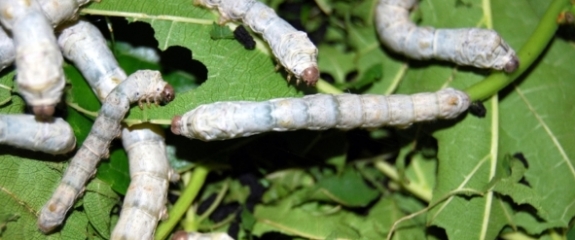Silkworms Spin Super-Silk

After eating carbon nanotubes and graphere it seems that silkworms spin a super-silk and this strong, conductive material could be used for wearable electronics and medical implants, say researchers. This work describes an easy way to produce high-strength silk fibers on a large scale.
Silkworms, the larvae of mulberry-eating silk moths, spin their threads from a solution of silk protein produced in their salivary glands. Silk is very strong but this new material is even stronger and tougher. It is as yet unknown how the silkworms incorporate the nanomaterials in their silk.
Previously, researchers have added dyes, antimicrobial agents, conductive polymers, and nanoparticles to silk—either by treating spun silk with the additives or, in some cases, by directly feeding the additives to silkworms. To make carbon-reinforced silk, worms were fed mulberry leaves sprayed with aqueous solutions containing 0.2% by weight of either carbon nanotubes or graphene. The silk was collected after the worms spun their cocoons, as per standard silk production. Treating already spun silk would require dissolving the nanomaterials in toxic chemical solvents and applying those to the silk, so The feeding method is simpler and more environmentally friendly than treating already spun silk.


